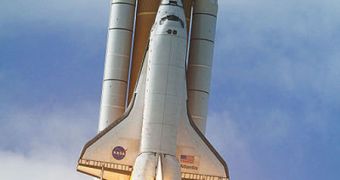It's no longer a secret to anyone that the American space agency is operating under very limited funding. This couldn't have come at a worst time, and this is reflected by the fact that agency officials are turning to the general public for advice on how to spend its money.
This is a time of innovation and heavy investment, in which national space agencies and private corporations are beginning to compete for the creation of cheaper and safer spacecraft.
It is precisely in this climate of progress related to space exploration that NASA finds itself tied by the hands, financially speaking. With so many new technologies and areas of science emerging, the organization simply cannot decide on which of them to put its money.
In a series of panels held this week, representatives from the space agency unveiled a series of ideas pertaining to technological progress that could set up the foundation for future space missions.
But NASA also wanted to get some input from the general public on this, to help it determine where the limited investment funding it has at its disposal should go. The decisions made following these meetings could shape the future of America's space program.
Some of the topics covered at the conference included robotic exploration of space, the development of new power and navigation system, as well as the refining of entry, descent, and landing techniques.
All these topics could have direct applications in real-life missions, such as those destined for the Moon, Mars, near-Earth objects (NEO), and maybe beyond, Space reports.
“There are so many different technologies we would like to use, but we need direction – not just from NASA, but from the public and outside experts – about how to best prioritize tech advancements,” explains NASA official Karen Thompson
“We have limited funding, so key decisions need to be made by the committee, with help from the public, about which technologies should be pursued,” she adds. Thompson is the chief technologist of the NASA John F. Kennedy Space Center (KSC), in Florida.
“Advancements need to be made for future space missions to provide crew safety. Systems should be developed and provided affordably, and require sustainability in extreme environments and for remote locations,” adds NASA Johnson Space Center (JSC) engineer Katy Hurlbert.
“High recurring costs are really impacting our space program. This is true ten years ago, it's true today and will likely be true tomorrow” concludes KSC official Greg Clements.

 14 DAY TRIAL //
14 DAY TRIAL //